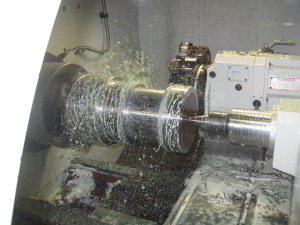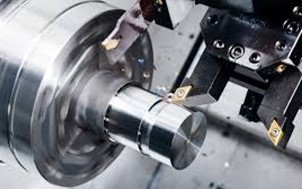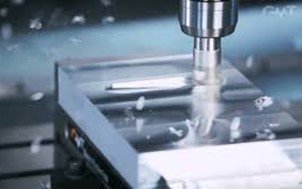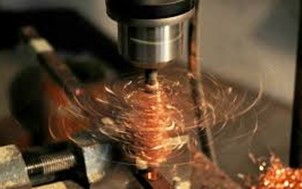
What is Machining?
Machining covers a wide variety of actions that take a raw material and turn it into something else. It could be defined as a controlled process that takes raw material and transforms it into a desired final shape and size. This can include material-removal as seen with such actions such as cutting, drilling or boring, or material addition. Although machining is most commonly used with metal products, machining can also be done with materials such as wood, ceramic, plastic, and composite materials. (Source: Advance Machining, https://advantagemachining.ca/what-is-machining/)
Brief History of Machining. “Machining” was a term that was first coined around the middle of the 19th century that described the use of a machine to process materials into some type of desired geometry. As the adoption of machines became more common, more machining processes were being performed by these types of machines. During this time turning, boring, milling, drilling, sawing, tapping, among others, were innovations in the manufacturing process; however today we call these “traditional” machining processes.
Modern Machining. Today, we have three main principal machining processes; turning, drilling, and milling. There are other processes that could be considered part of modern machining only because they typically use a modern machine tools, such as shaping, boring, broaching, sawing; however for the sake of modern machining, these are not explored in this article.

Turning Operations
Turning operations in modern machining see the material being rotated against the cutting tool, such as you would see in a lathe; however this could be all controlled by a central computer unit instead of a worker manually working the machine.

Milling Operations
Milling operations in modern machining has a stationary work piece being cut by a rotating cutting tool that is computer controlled. Milling machines are one of the primary machining tools that are used in the industry, virtually all of which are CNC machines, or “computerized numerical control”. This means that the main operations are carried out by a computer, rather than a worker manually moving a cutting edge.

Drilling Operations
Drilling operations in modern machining go far beyond a standard drill press. Although the drill press is a common “traditional” type of manual machining, today’s modern machining sees a drill press being operated by computerized numerical control, or CNC. In this type of machining, holes are produced or refined by using a rotating cutting head in direct contact with a stationary (and usually secured) work piece.